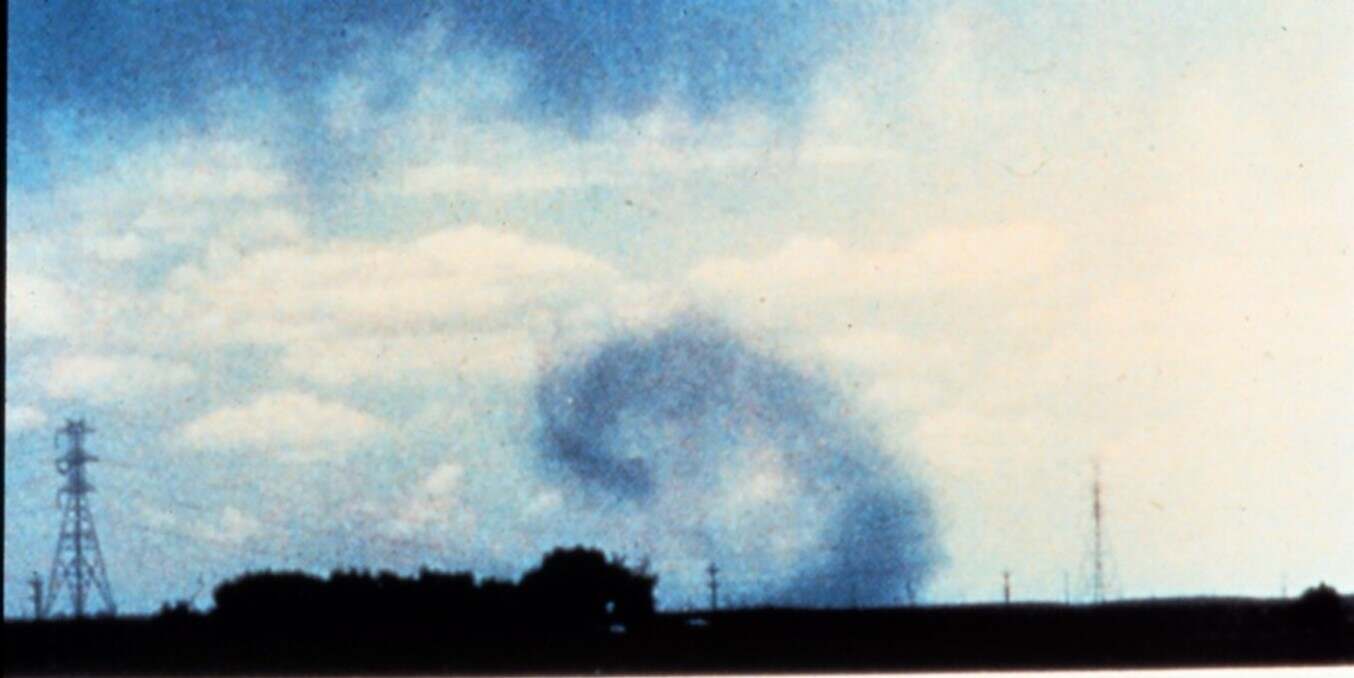Several recent high-voltage transmission-line failures have highlighted a phenomenon that has a history in Australia going back well over thirty years. In the early 1990s two structural engineers: Henry Hawes at Powerlink (Queensland), and Dan Dempsey at Transgrid (NSW), began querying the then-current design approaches for wind loading, after observing and documenting numerous line failures in those states. They approached the Bureau of Meteorology and CSIRO, and later JDH Consulting and Weather Solutions, for advice – this led to studies in the late 1990s of line risk that covered every mainland state. These studies identified failures going back to the 1950s.
The failures were primarily caused by small local windstorms that the industry then called ‘high-intensity winds’. These are now known as ‘convective storms’, or ‘convective downdrafts’ which include ‘downbursts’ and ‘microbursts’. These storms are often described in the media as ‘mini-tornados’ – however, although actual tornadoes can, and do, occur in Australia, the majority of transmission line failures are associated with the small local ‘straight-line’ winds from convective downdrafts.
These extreme wind events are nearly always associated with thunderstorms. Every thunderstorm generates an outflow of wind in its life cycle, but very severe and damaging downdrafts of air are sometimes generated. Upwards convection of warm, moist air, is followed by rapid cooling at high altitude releasing latent heat, and heavy rain and hail. The negative buoyancy with respect to the surrounding air generates a strong downwards vertical motion. At ground level this often generates a horizontal vortex and strong winds for a short periods (typically a few minutes). It can be visualized as a single large gust that may envelope two or three transmission-line spans, including the supporting towers.
Australia is not unique in experiencing these events. Downdrafts are known as ‘descendentes’ in Spanish. Similar storms with transmission line failures have been identified in Argentina, South Africa, Brazil, Canada and the United States. In the 1990s, several international meetings were held to share experience and develop new design approaches.
In recent years, following the multiple failures in South Australia on 28 September 2016, extensive risk studies were undertaken for ElectraNet, led by JDH Consulting, in collaboration with the Bureau of Meteorology, CSIRO (Land and Water), and University of Queensland, including analysis of all available recorded wind gust data from that state and separation and extraction of those from convective events.
The main factors to be considered when designing for these events are:
- The orientation of a line with respect to the prevailing wind directions from convective storms
- The risk, or probability, of the ‘footprint’ of a downburst intersecting with some part of a line.
- The overall length of a line directly increases the risk of an intersection somewhere along the line.
- The lower turbulence gusting in the winds, compared with those in larger ‘synoptic-scale’ windstorms, which were the basis of traditional methods of transmission-line design.
- ‘Span reduction factors’, used to reduce the load on spans 400-500m long, can be 50% higher than those assumed in traditional design methods for wind loading. Thus a 140km/h gust speed in a small downburst may generate wind loads on a typical high-voltage span that are up to 50% higher than those in a larger wind event with the same gust wind speed at a point.
As has been noted by others, most of the current high voltage network in south-eastern Australia is old, with some of dating back to the 1950s. The corrosion in some structures in Victoria has been reported on recently; however, this is not the sole reason for the failures in convective wind events – most of the network was designed and built before the phenomena described above were understood and even the towers in relatively good condition are under-designed for the wind loading from local convective storms.
It would be horrendously expensive, and unrealistic, to upgrade every line in the network, so that failures from convective storms never occurred. However, new lines currently under construction, and in planning, for the energy transition, should be designed for these critical events, particularly the interconnectors between the legacy state systems. If not ‘gold plating’, some ‘silver-plating’ of the transmission system may be required if frequent power outages are not to become the norm.

A rare image in which dust was picked up showing the structure of the vortex created by a convective downdraft (from the United States)
Source: Ted Fujita (University of Chicago) – Downburst
About our Guest Author
 |
Dr John Holmes is the Director of JDH Consulting.
He was previously at James Cook University, Townsville for seven years, and CSIRO, Divisions of Building Research, and Building, Construction and Engineering for fourteen years, reaching the level of Chief Research Scientist. He was also a Principal Research Fellow at Monash University, Melbourne, Australia and a Visiting Professor at several North American universities. You can find John’s contact details through the JDH Consulting website. |


Hi John, Great article.
I note elsewhere on WattClarity they mention: ” Sydenham (SYTS) No. 1 and 2 500 kilovolt (kV) lines tripped following failure of six 500 kV towers (three on each of the two 500 kV circuits).”
I would be interested to know how far apart these groups of towers were, and whether the collapse occurred within a few minutes of each other.
Peak winds in these microscale events are usually very small, temporally and spatially.
I would have thought two lines should be enough redundancy. Is it necessary to increase the separation between lines?
All solutions sound expensive!!
Thanks for the comment. I don’t know the details of last week’s failures at Anakie and they have not been made public as far as I am aware. However, in previous events, several adjacent towers have failed as a group.
On your second point, the storms are not that small. A ‘footprint’ of peak winds in a ‘typical’ convective downdraft has rough dimensions of 10km along-wind x 3km crosswind. Those dimensions would be large enough to cover two parallel lines, unless they are separated by several kilometres.
Furthermore there may be several storm ‘cells’ – e.g. in SA on 28/9/16, there were at least three separate cells resulting in 22 towers failing or with severe damage.